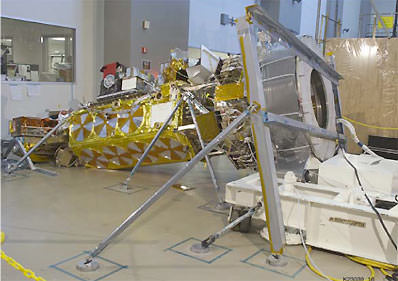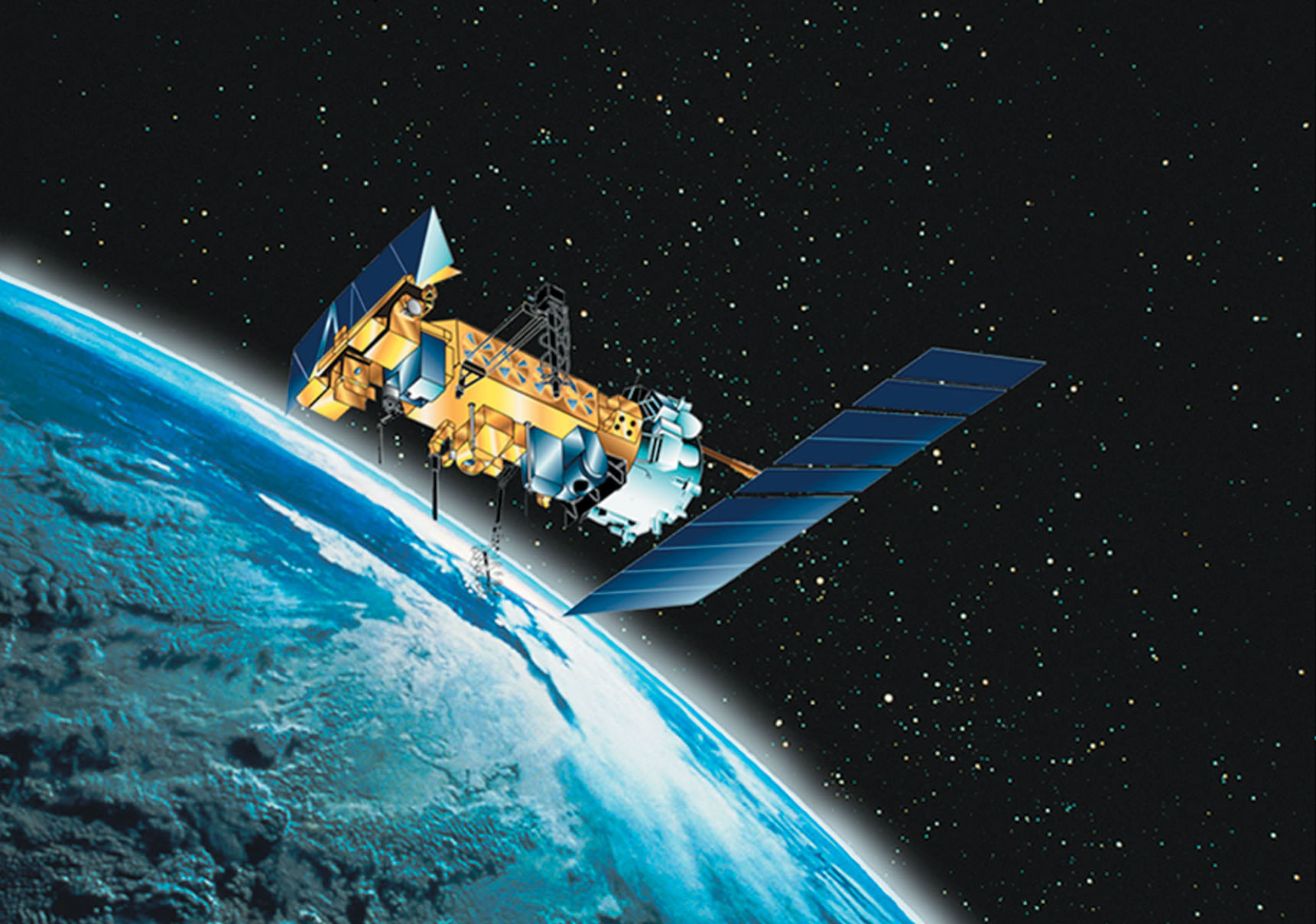[/caption]
On September 6, 2003, the NOAA N-Prime satellite fell to floor of the factory where it was being assembled, and suffered significant damage. But now, over five years later, the satellite that perhaps should have the nickname of “Phoenix” is ready to head into polar orbit around the Earth to improve weather forecasting and monitor environmental events around the world. Liftoff from Vandenberg Air Force Base, California is scheduled for early Wednesday morning (Feb. 4) at 2:22 a.m. PST (5:22 a.m. EST; 1022 GMT), on board a Delta 2 rocket. NOAA N-Prime will provide a continuity of service, as well as restoring degraded service from older weather forecasting satellites.
UPDATE: The launch of the NOAA-N Prime weather satellite was scrubbed early on Feb. 4 when a launch pad gaseous nitrogen pressurization system failed. This system maintains pressurization and purges to various systems of the Delta II rocket prior to launch. Immediate repair to this system is being undertaken.
The next launch attempt will be no earlier than Thursday, Feb. 5 at 2:22 a.m. PST., weather permitting.

After the National Oceanic and Atmospheric Administration’s N-Prime satellite tipped over while on a holding cart, engineers didn’t know if the satellite would be salvageable. It took several months to survey the damage and inventory spare parts to make sure the satellite could be rebuilt, according to Gary Davis, Director of the Office of Systems Development at NOAA’s Satellite and Information Service, interviewed for an article in Spaceflightnow.com.
“We put together a philosophy that, without question, if we had a spare part, we would swap it out. If we didn’t have a spare part, we would attempt to fix. If we couldn’t fix, then we would have to buy new,” Davis said.
About 75 percent of the craft’s components were replaced with new or spare hardware. Engineers recertified components they decided to keep on the spacecraft, and the company that built the satellite, Lockheed Martin, disassembled the satellite and conducted vibration and thermal tests on every part engineers planned to reuse.
NOAA-N Prime is the fifth and last in the current series of five polar-orbiting satellites with improved imaging and sounding capabilities.
Watch a video about NOAA N-Prime.
The satellite will collect meteorological data and transmit the information to NOAA’s Satellite and Information Service, which processes the data for input to the National Weather Service for its long-range weather and climate forecasts. Forecasters worldwide also will be able to access the satellite’s images and data.
NOAA-N Prime has sensors that will be used in the Search and Rescue Satellite-Aided Tracking System to monitor for distress signals around the world.
Watch the launch live on NASA TV, or follow the events on NASA’s Launch Blog.
Sources: NASA, Spaceflightnow.com


Whoops. Wouldn’t like to have been the person responsible for that little stuff up.
Astrofriend-Lol, I wonder how many heads rolled? However, I’m glad cooler heads prevailed, instead of mulching the damaged Satellite and starting from scratch, they found it was much cheaper to change the damaged parts and rebuild it with improved sensors and other components. When it comes to Satellites, it has not reached the everyday philosophy of ‘throw-away and buy a new one’ like a home PC. lol.
hmmmm…. the link to the movie doesn’t work for me.
Firefox 3.0.5
Mac Pro (1st generation)
OS X 10.4.11
Feenixx –
I re-posted the link, so hopefully it works better now. You need Windows Media Player, too, to see it.
Phoenix?!!
No, silly. HUMPTY DUMPTY!
I can see it now…, “…ya, and then Bond and the other guy FELL… straight through the glass atrium ceiling…” *flails hands wildly in the air to simulate the described action, inadvertently whacks a switch that disengages the satellite’s supports… SMASH!* “Whoa… Hey, my bad… Dang… OK, I’m getting the broom. it’s all good, guys.”
Hey, is there a section just for latest news